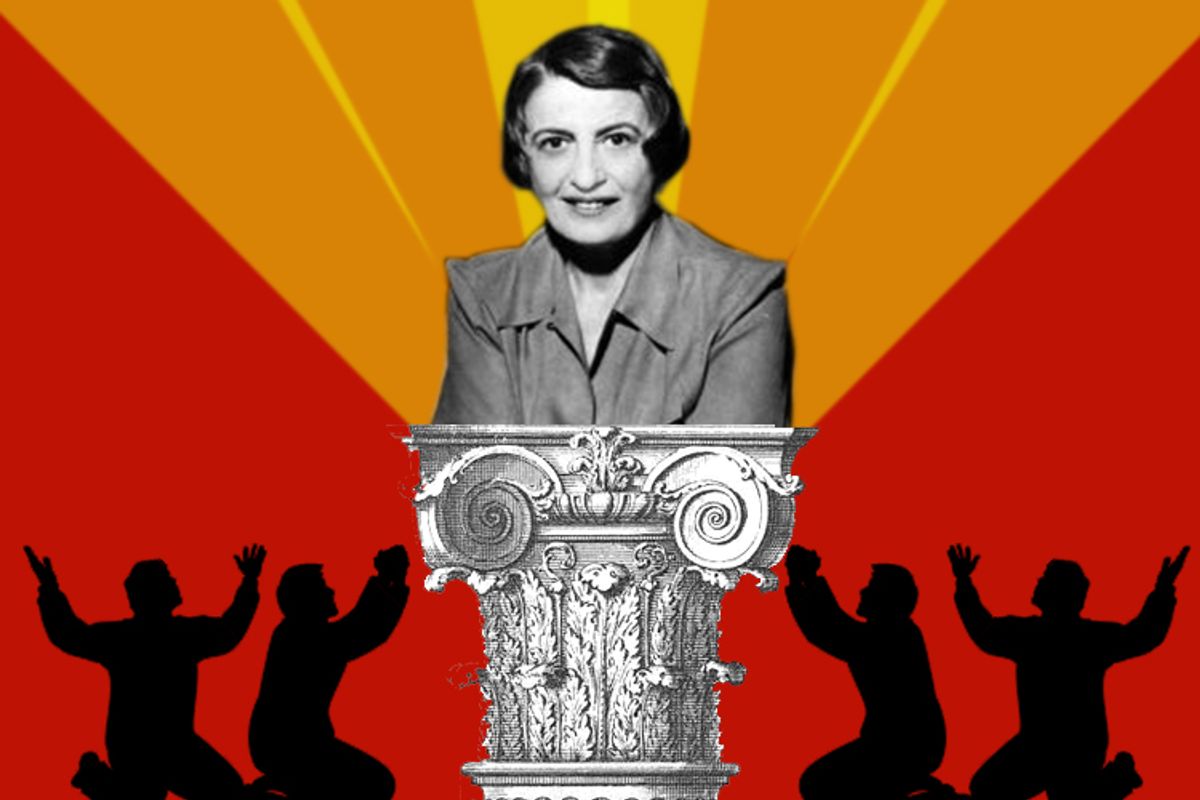Did you know that Ayn Rand had a theory of art? No? Neither did I! But I discovered it recently, thanks to a tip from painter Abigail Markov. It’s encapsulated in the hefty 539-page treatise "What Art Is: The Esthetic Theory of Ayn Rand," written and compiled by Louis Torres and Michelle Marder Kamhi. And while I didn’t buy the book — no, I couldn’t quite bring myself to do that — I did have a chance to read excerpted bits from the book as well as chapter summaries online. I’d like to share with you, dear reader, some of the key takeaways.
Let’s start where the book starts, with the most basic question of all: what is art? This is actually the hardest one to answer without the full text in front of us, but the website does provide some clues: Rand sees the primary purpose of art as “nonutilitarian and psychological in nature” and says that its cognitive function is “to bring man’s fundamental concepts and values ‘to the perceptual level of his consciousness’ and allow him ‘to grasp them directly, as if they were percepts.’” OK, fair enough. I can get with that.
But the fun really begins when you flip the question and ask what isn’t art. According to Rand, the answer is: almost everything! Rand is horrified by the the art establishment’s assertion that anything can be art if the artist (or a critic) says so, and she offers a “groundbreaking alternative view,” which, from what I can surmise, basically asserts that representational painting, drawing, and sculpture are about the only acceptable forms of visual art there are.
Here are some things that Rand says are not art (from all artistic fields, not just visual):
- Any and all abstract art
- Photography
- American Indian artifacts and other examples of “craft”
- Anything by John Cage, who has “schizoid tendencies reflected in his work”
- Anything by Merce Cunningham
- The fiction of James Joyce, with its “elaborately contrived inaccessibility”
- Anything by Samuel Beckett
- “The inscrutable postmodernist ‘poetry’ of John Ashbery”
Oh and let’s not forget Chapter 14: Postmodernism and the “Visual Arts” (all scare quotes theirs, not mine) which includes
"a critique of spurious postmodernist genres (from 'pop art,' 'conceptual art,' and 'performance art' to 'installation art' and 'video art') and acclaimed postmodernist 'artists,' including Andy Warhol, Robert Rauschenberg, Jasper Johns, Roy Lichtenstein, Cindy Sherman, and Bruce Nauman, Nam June Paik, Chuck Close, and Matthew Barney"
Whew! Glad we got those postmodern “artists” out of the way. The appendices also offer a few more helpful distinctions for ruling out vast swaths of creative output from, I don’t know, anytime after 1900. From Appendix A: New Forms of Art:
"As a rule, if the term 'art' is preceded by qualifiers such as 'conceptual,' 'incendiary,' or 'Pop,' one can be reasonably certain that the work in question is not art by the standards outlined in this book."
Don’t worry, guys, “Web art” is definitely on this list.
And from Appendix B: Artworld Buzzwords:
"What follows are examples of some of the more common buzzwords and critical clichés of the artworld. One can safely infer that whenever these words or phrases are used in arts criticism, the work in question is not art by any objective standard."
The buzzwords on Part I of that list include such innocuous verbs and adjectives as “challenge,” “confront,” “explore,” and “quirky.” BUT WAIT. Part II has more! Among them: “the artist” (yes, really; I did not make that up), “emerging artist,” “contemporary,” “gallerist,” “make,” “new,” “object,” and “visual culture.”
In other words, Any Rand says: Watch out for those quirky, abstract political web installations made by emerging artists and shown by a handful of new gallerists that explore our society’s visual culture and challenge our notions of objecthood.
At this point it might be relevant to mention Romney’s comments about axing the National Endowment for the Arts if elected (in the book, Rand calls the NEA “a dubious model” for arts support) or the influence of Rand on vice presidential candidate Paul Ryan … but I just can’t do it. I can’t take Ayn Rand’s “esthetic theory” seriously enough for that.

Shares